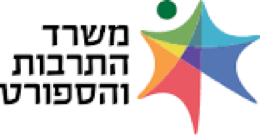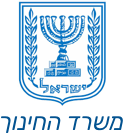Burnt Postcards and Blossoming Letters
In 5704 (1944), while the cities of Eastern Europe, the great and historical centers of Torah, had mostly already faced extermination or were in the midst of terrible killing sprees, Hungary was still peaceful and its inhabitants lived under an almost normal routine.
In the month of Adar 5704, while the Nazi tyrants had already begun to inflict resounding defeats on the Russian front and in other places, the Germans occupied Hungary and within a few months, hundreds of thousands of Jews were sent to Auschwitz.
Looking back, it is horrifying to turn the pages of history and observe the communities of Hungary that were still alive while the whole of Europe was burning up in an inferno.

The Jewish printing houses in Hungary also operated, until the last moment! And so we find books that came out of the printing press in Hungary in preparation for Passover in the year 5704, and for example we will cite the “Chukat HaPesach HaKatzar”, a basic halachic book whose first edition was published in the year 5704 by Rabbi Bentzion Gassenbeuer, who was a rabbi in important communities In Galicia. His book won the approval of the generation’s geniuses and righteous men and was published in several editions during his lifetime.
In the year 5704, in preparation for Passover, Rabbi Yaakov Yehoshua Wiesner of the city of Bisarmin (Hajdúböszörmény in Hungarian – a city in northeastern Hungary, about 20 kilometres north of Debrecen) published a new and elaborate edition of this book, and he did not imagine that by that Passover, the Jews would already be under The Nazi regime.
A thousand Jews of Bisarmin were deported in the month of Iyar to Auschwitz, and only the few who were taken to labour camps survived.
This is the first page of the book that was printed in Meshulam Katz-Katzberg’s publishing house in Budapest.
We don’t know what happened to Rabbi Weisner and the publisher Rabbi Meshulam Katz, but this sad postcard, a reminder of a beautiful life that was cut short by a sword, remains with us (courtesy of the Jerusalem National Library).
Here is the link to the previous edition of the book from the website Hebrew Books: https://www.hebrewbooks.org/pdfpager.aspx?req=32362&st=&pgnum=2

Rabbi Yishchar Shlomo Teichtal’s famous book was also printed at the publishing house of Rabbi Meshulam Katz-Katzburg in Budapest, 5703 (1943).
Additional books printed in the midst of the Holocaust in Hungary (in the year 5704), from “HaSafranim” (The Librarians), the National Library’s blog:

A Shas (6 orders of the Mishna) that was printed with the approbation of Satmar Rebbe, in which he wrote: “After the Holy Scriptures were printed, their memory was lost from the land… and many books and Gemaras were missing…”,
And with the approbation of Rabbi Shlomo Zalman Ehrenreich, who wrote: “In our many iniquities after the wars and the names that existed in the world at that time, many holy books and Gemaras were burned and lost, and the printing industry in the country of Poland and other countries was also destroyed…”
Rabbi Shlomo Zalman and his community were murdered several months after this (his son, Shimon Zev, published the Gemara that he mentioned).
This book was printed after the journey of the Belzer Rebbe from Hungary to the Land of Israel, about a month before the Nazi occupation, and it contains the sermon of the Bilgoraj Rebbe, and holy words of the Belzer Rebbe that he delivered in the city of Budapest in the year 5704.
The book was printed by a publishing house in Budapest of “the widow and the sons of the late Nachum Uri Eisler”.








